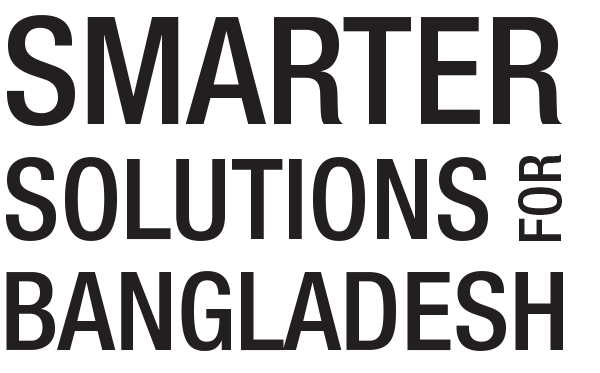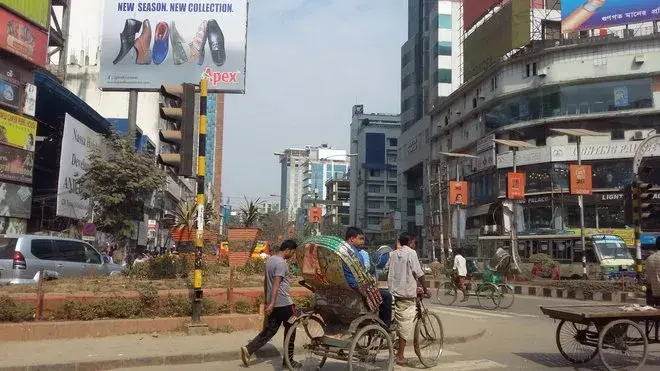Flexible microfinance models - For more economic opportunities
by Bjorn Lomborg
Bangladesh is ground zero for microfinance. Over the decades since Sir Fazle Abed founded BRAC and Muhammad Yunus started Grameen Bank, the strategy of providing micro-sized loans to borrowers has helped increase income and consumption for the poor, ensured food security for many, created employment opportunities, and empowered women. According to the Credit and Development Forum, nearly 700 microfinance institutions operate in the country today, disbursing approximately Tk 647 billion (Tk 64,700 crore) to 3.4 crore active borrowers. The microfinance sector now contributes about 10 percent of GDP and generates approximately 250,000 jobs.
The early success of microfinance in many places around the world caused some to praise it as a panacea for economic development. More recently, however, critics have questioned some aspects of the model—their concerns include worries that poorer borrowers can become trapped in a spiral of debt, or that entry by for-profit entities has caused microfinance to lose its moral compass.
The truth lies in the middle. While microfinance may not be a cure-all that can eliminate poverty worldwide, it can produce positive—if modest—benefits. And new research from Bangladesh Priorities highlights an innovation in microfinance that promises to boost those benefits even more.
Bangladesh Priorities works with dozens of teams of local and international expert economists. Each team studies the costs and benefits of solutions to issues like maternal health, education, and air pollution. In a partnership with Copenhagen Consensus and BRAC, we aim to help Bangladesh discover where we can do the most good for every taka spent toward solving the country’s most pressing problems.
New research by Subir Bairagi, an agricultural economist at the Institute of Policy and Social Sciences (IPSS) and postdoctoral fellow at the International Rice Research Institute, and Wasel Bin Shadat, executive director of IPSS and lecturer of econometrics at the University of Manchester, shows that incorporating flexible repayment models into microfinance can increase benefits, particularly to borrowers. Each taka spent on these aims stands to do more than 2 takas of social good.
| Strategy | Takas of benefits per taka spent |
|---|---|
| Traditional Microfinance | 1.7 |
| Flexible Microfinance | 2.2 |
A recent set of reports by MIT’s Abdul Latif Jameel Poverty Action Lab garnered much attention. They studied the effects of microfinance in six countries using randomized evaluations. Such evaluations use random chance to determine if a person participates in, for example, microfinance or not, making it easy to see how well microfinance actually works. The MIT researchers found that the benefits are likely much more modest than some proponents had previously claimed.
Our experts have used a long-term study to examine Bangladesh specifically. They find that the benefits from traditional microfinance turn out to be 1.7 takas for each taka spent. So while microfinance may not deliver an incredibly high return, there are indeed positive net benefits of 0.7 after having paid off the one taka in costs. The microfinance institution captures about 0.4 of that benefit, leaving 0.3 takas in net benefits for the borrower.
One issue with traditional microfinance is that while it has been good for borrowers with continuous and predictable income flows, it can leave behind people whose income is lumpy, like farmers or certain entrepreneurs. Traditional microfinance can also fail to reach people at the most extreme levels of poverty, partly because of rigid repayment options.
So the researchers examined a strategy to overcome these hurdles: flexible repayment schedules that grant borrowers a grace period during the lean season. Introducing this tweak across Bangladesh could grow the microfinance market by approximately 2.5 percent, providing new opportunities for ultra-poor citizens, many of whom are farmers or laborers. Such a flexible system would mean borrowers wouldn’t have to repay loans until after they’ve received revenues from their harvest or production.
Since 2008, a program through the Palli Karma-Sahayak Foundation has offered flexible microfinance options in Bangladesh. By June 2013, it had disbursed loans to 512,000 borrowers, totaling more than Tk 9.6 billion (Tk 960 crore). A 2012 study showed that under this flexible program, the benefit to borrowers reflected in their incomes was 8 percent higher than with traditional microfinance.
Overall, the experts estimate that each taka spent on flexible microfinance does 2.2 takas of good. After having paid off the cost of one taka, the microfinance institution again captures about 0.4 takas, but now the borrower gets 0.8 takas, or almost three times as much in benefits.
Why would microfinance institutions agree to use flexible repayment strategies? Simply because delivering a new product opens a new market, allowing the institutions to reach people who have irregular income flows, while maintaining their profit share.
Flexible microfinance can do more than 2 takas of social good for each taka spent, improving upon the return from traditional methods. This result is one of many from the Bangladesh Priorities showing us how much good we can do focusing on different solutions. I would love to hear your thoughts: should microfinance be one of the top priorities for the country? Let your voice be heard on https://copenhagen.fbapp.io/microfinancepriorities and help pick the top priorities for Bangladesh.
Dr. Bjorn Lomborg is president of the Copenhagen Consensus Center, ranking the smartest solutions to the world’s biggest problems by cost-benefit. He was ranked one of the world’s 100 most influential people by Time Magazine.
This article was originally posted in The Daily Star.


